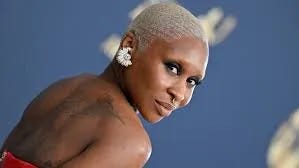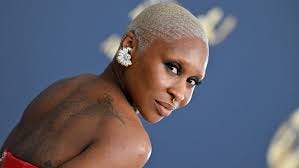I remember being instructed as a child by my caring elders on a generally held principle: “Never discuss religion or politics in polite company.”
As a young adult studying singing, I amended the phrase to include, “or vocal technique.”
Now as an old adult teacher of singing, I further tweak the phrase by omitting the ‘polite’ part, since practicing that is largely out of fashion.
Although this post is about singing and teaching singing, we can all have a look at our certainties in a way that might help our knowledge become something more akin to wisdom.
Certainty: the state of being completely confident or having no doubt about something.
Obviously, I think and talk about vocal technique all the time (occupational hazard) and love love love learning as much as possible from all sources. Fortunately, I also have over 40 years of lived experience in the field of singing and teaching singing, which means I can filter out whatever is nonsensical or just not useful.
Singing and teaching singing is a balanced combination of science, art, and humanities. Any attempt to simplify the art (and science, and humanity) of singing will be incomplete and ineffective.
Isn’t Vocal Technique Science?
Let’s start with what vocal technique is: Most animals can make sounds. We humans, along with our Animalia companions, use sounds to communicate. Developing and refining sounds helps us to communicate in more effective ways, like by using language. And when words aren’t enough, as they say, we sing.
Vocal technique means learning and practicing how to make the sounds one wishes to make in the most efficient way possible. Why efficient? So we can make our chosen sounds repeatedly and over time without injuring ourselves. This pursuit is as old as singing itself; some scholars trace the study of vocal production to Ancient Greek theatre over 2500 years ago, and most at least agree that 13th century monastics highly influenced the systemized art of singing.
For a deep dive into some of the points I make in this essay, have a look at Justin Jørgen Petersen's article, Voices of Dissent. Magnificently detailed and erudite, every serious singer and teacher should subscribe to A Voice Teacher’s Chrestomathy on Substack.
Cynthia Erivo Is Metal as Heck
Although I have not yet seen the movie Wicked (I know, I know; my students are appalled), I first heard Ms. Erivo in the National Geographic series Genius when she portrayed Aretha Franklin. I assumed that the Queen of Soul’s own voice would be dubbed in. I mean, who could possibly pull off sounding like the Goddess who lives in our ears to this day? I was skeptical. And proven wrong. I soon stopped comparing Ms. Erivo to Ms. Franklin, and just enjoyed both singers for what they offered my ears and soul.
The Video Interview
A few weeks ago a video interview circulated on the interwebz. Ms. Erivo was talking about her voice and how she sings, or at least what she is thinking when she sings. The way she described her understanding of her own process in no way passed the Voice Science Test for the multitudinous voice pedagogues who populate the Socials space, and boy, were they hoppin’ mad.
“It's not lost on me that we currently reside in an era characterized by Scientism, a quasi-religious perspective that reveres science as the ultimate arbiter of truth and solutions to all questions.” - Justin Jørgen Petersen, Voices of Dissent, A Voice Teacher’s Chrestomathy
And yet… the woman can sing, and she is a singer -not a voice teacher, to my knowledge - and zillions of ears will tell you they are moved, excited, enthralled by her singing, which is the exact meaning of, “the proof is in the pudding.”
‘Voice Science’ and ‘Functional Pedagogy’ and ‘Acoustics’ are the it terms for today’s voice teachers, despite there being nothing new about any of these things. Question the wisdom of over-focusing on these terms at your peril, my singing friends! The certainty of the voice pedagogy community does not tend to allow for straying off the path of SCIENCE, DAMN IT!
Before anyone sharpens their pitch forks, know that I of course appreciate all knowledge, and welcome any tools to help singers realize their goals, which I assume is the point of teaching singing. Learning anatomy and ‘voice science’ is, honestly, the easy part - especially nowadays with the readily accessible plethora of books, conferences, workshops, websites, youtubers, and on and on. Anyone with a bit of background and a lot of interest could learn all the anatomy involved in singing, how that anatomy functions, and even a fair amount of acoustic science in just a few short months.
Knowing Isn’t Doing
In general, we cannot teach another human to sing well in just a few months, however. We are not machines, and we are greater than the sum of our anatomical parts. Singing (and teaching singing) is overlaid with psychology, identity, personality, motivation and resistance, and a thousand other things, like learning style.
Consider how a student might respond to the request:
“Activate your posterior cricoarytenoid muscle.”
If only it were that easy! Teaching singing is a delicate dance of constant listening, adjustment, flexibility, compassion, and what often feels like mind-reading. A teacher’s ‘ears’ develop over many years of deep and active listening to great singing, and are enhanced by experiencing sensations in their own body. One student likes a lot of explanation, another relies on listening to herself and her teacher’s demonstration, still a third primarily memorizes sensation. Most students shift among all of these randomly and in differing proportions depending on who they are that day, how they feel, what they are working on, and to what they have recently listened.
The permutations are endless, and we teachers must have all antennae out all the time, sift through and prioritize the data coming at us, and then translate it into a language (i.e. learning style) that is most approachable by the human standing before us. And if one way doesn’t get through, we must have 6 more at the ready to try.
Make It Make Sense To YOU
I use ‘correct’ terminology in lessons because understanding the parts and the function of one’s instrument is a foundational first step, and I want my students to be prepared for what they will likely encounter in college and beyond. I also constantly ask students to explain to me in their words what they experience, hear, and feel, when they are singing. What is expressed - once I assure them that nothing is too ‘out there’ - is an amazing array of images and metaphors that never occurred to me! But then I as the teacher connect the imagery to what is happening physically while continuing to use some of the student’s verbiage. We then discuss the attending sensations, the surrounding feelings and thoughts, and it all fits together to make a more complete picture; a picture which can shift, expand, and grow.
Compassion and Tolerance
TBH, I’m mortified at the vehemence I’ve encountered by ‘voice science’ pedagogues who express their views as singular, as if using words like “evidence-based science” is somehow different from empiricism that’s always been part of the scientific (and singing!) process. Worse are the dogmatic beliefs, or scientism as mentioned in Justin’s article. The myopic pursuit of certainty - no doubt begun with positive intention - has led to a distinct loss of curiosity and empathy.
Back to Ms. Erivo
Imagine! A singer who may not realize she engages her zygomaticus major muscles as she sings! And yet, musicality, communication, and pure joy are present. Tearing down an artist like Cynthia Erivo by singing teachers is just embarrassing. We absolutely should teach students that the trachea and esophagus are two different organs with separate functions, but we can do so without maligning anyone. When I notice my students slipping from discernment into judgment or criticism of an established artist, I often gently remind them the artist is famous, while we are not. Not that fame is everything, but the point is usually taken, as I hope it is here.
We live in a sad era that prizes aggression, force, disconnection, and at least the appearance of certainty. These qualities limit us and are the bane of artistry. Let us maintain our humanity, our community and connection, our open minds and calm approach when we engage in conversations about the art to which we have dedicated our lives.
LISTEN: Cynthia Erivo, Herbie Hancock - Fly Me To The Moon (Live From The 67th GRAMMY Awards)
May you live in ease and kindness, with a free heart.
Well Canto is a registered trademark.
Singing lessons with Barbara: www.WAVS.info
Well Coaching with Barbara: www.BarbaraShirvisWellness.com










You make beautiful distinctions between doing and the science behind the doing. Your article reminds me of the old days in math class when one would get marked wrong for having the right answer if the way you got there didn't match the expected process.
So much truthiness in here that can be applied to those who teach subjects other than vocal. And the last paragraph is perfect: "We live in a sad era that prizes aggression, force, disconnection, and at least the appearance of certainty. These qualities limit us and are the bane of artistry. Let us maintain our humanity, our community and connection, our open minds and calm approach when we engage in conversations about the art to which we have dedicated our lives."